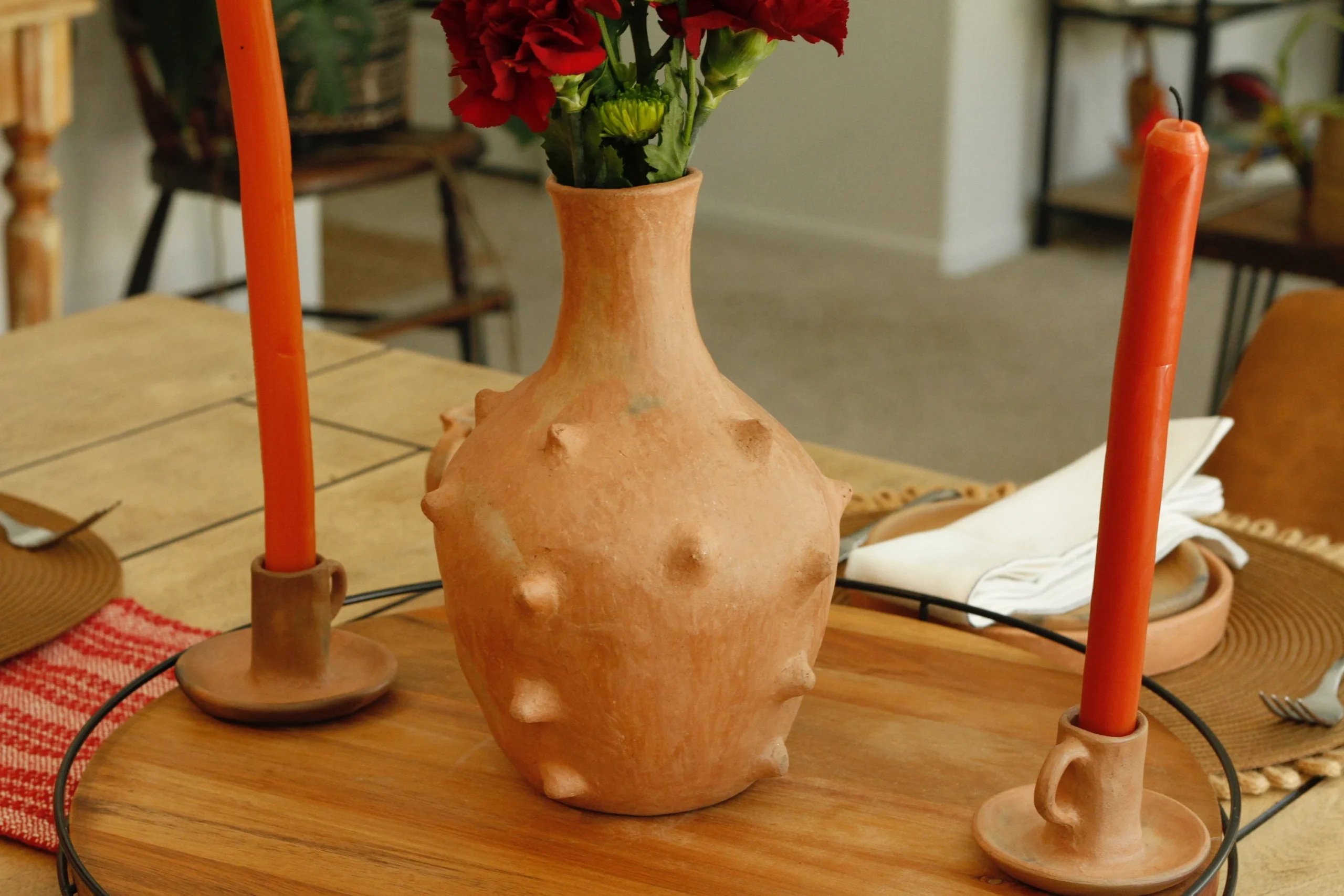Oaxaca, located in southern Mexico, is known for its vibrant culture, rich history, and diverse artisanal traditions. Among its many crafts, one that stands out is pottery, which reflects the region’s deep connection to its indigenous roots and the natural resources of the land. Oaxaca’s pottery-making tradition is vast, with various styles and techniques passed down through generations. One of the most distinctive forms of pottery in Oaxaca is Pochote pottery, a unique craft that blends traditional methods with innovative design elements.
This article delves deep into the cultural significance, history, and techniques behind Oaxaca Pochote pottery, examining how this craft has survived through centuries, evolving into a symbol of identity, artistry, and heritage. We will explore its roots in indigenous cultures, its modern resurgence, and how the artists of Oaxaca continue to breathe life into this extraordinary craft.
I. The Roots of Oaxaca Pottery
A. Pre-Columbian Origins
Oaxaca’s pottery tradition traces its roots back to pre-Columbian times, when indigenous peoples such as the Zapotecs, Mixtecs, and other ancient civilizations lived in the region. These groups were among the first to develop pottery-making techniques, utilizing the natural clay deposits found throughout Oaxaca. Archaeological findings suggest that pottery played a crucial role in daily life and religious practices, serving both functional and ceremonial purposes.
The Zapotec civilization, one of the most influential pre-Hispanic cultures in Oaxaca, created exquisite pottery that ranged from simple domestic vessels to intricately designed ceremonial pieces. The use of clay allowed artisans to produce everything from cooking vessels and storage containers to ornate funerary urns. Many of these early pieces were adorned with carvings or painted with natural pigments, depicting gods, animals, and geometric patterns that held symbolic meanings.
B. Indigenous Influence on Pottery Styles
The indigenous cultures of Oaxaca have left a profound impact on the region’s pottery tradition. Even after the Spanish colonization in the 16th century, many of the techniques and styles developed by the pre-Columbian civilizations persisted. Indigenous artisans continued to use locally sourced materials, such as clay, natural pigments, and organic tools, to create pottery that was uniquely Oaxacan.
The process of pottery-making in Oaxaca, particularly in indigenous communities, remains deeply connected to the land. Clay is often sourced from nearby rivers or hills, and the firing process relies on traditional wood-fired kilns. These practices create pottery that is not only functional but also a reflection of the natural environment from which it is derived.
II. The Emergence of Pochote Pottery
A. What is Pochote Pottery?
Pochote pottery takes its name from the Ceiba aesculifolia tree, commonly known as the pochote tree, which is indigenous to Mexico and Central America. The tree holds a significant place in Mesoamerican culture, often associated with the axis mundi or the connection between the heavens, earth, and underworld. While the pottery itself is not made from the pochote tree, the name symbolizes the deep-rooted traditions and cultural significance associated with the craft.
Pochote pottery, distinct from other Oaxacan pottery styles like black clay (barro negro) or red clay (barro rojo), is known for its organic forms, earthy tones, and use of natural elements in both its creation and decoration. Artisans who work with Pochote pottery focus on creating pieces that embody the spirit of Oaxaca’s landscape, incorporating motifs of flora, fauna, and indigenous symbols.
B. The Role of the Pochote Cultural Center
The resurgence of Pochote pottery in modern Oaxaca can be largely attributed to the establishment of the Centro Cultural Pochote (Pochote Cultural Center) in the city of Oaxaca. Founded in the late 20th century, the Pochote Cultural Center became a hub for artists and artisans dedicated to preserving and promoting Oaxacan crafts, including pottery. The center took its name from the sacred pochote tree, which embodies resilience, tradition, and cultural heritage.
The center has played a pivotal role in reviving traditional pottery techniques, while also encouraging innovation and contemporary interpretations of the craft. Many of the artists associated with the Pochote Cultural Center use ancient techniques, such as hand-building and wood-firing, but also incorporate modern aesthetics and design elements into their work. This blending of the old and new has allowed Pochote pottery to flourish as a symbol of both cultural preservation and artistic evolution.
III. The Process of Pochote Pottery Creation
A. Sourcing and Preparing the Clay
Like most pottery traditions, Pochote pottery begins with the sourcing of clay. In Oaxaca, artisans typically collect clay from local riverbanks, hillsides, or other natural deposits. The clay is carefully selected for its texture, malleability, and suitability for firing. Once collected, the clay must be cleaned and prepared for use, often by mixing it with water and removing impurities such as stones or organic material.
In some cases, artisans will mix different types of clay to achieve the desired consistency or color. The clay is then kneaded by hand, a labor-intensive process that helps to remove air bubbles and ensures a smooth, workable material. This step is crucial for preventing cracks or breakage during the firing process.
B. Hand-Building Techniques
One of the defining characteristics of Pochote pottery is its reliance on hand-building techniques, rather than using a potter’s wheel. This traditional method allows artisans to create organic, free-form shapes that are often inspired by nature. Hand-building methods include coiling, pinching, and slab-building, each of which offers a different way of shaping the clay into vessels, figures, or sculptures.
In the coiling method, artisans roll the clay into long, thin ropes, which they then stack and smooth together to form the walls of a pot or other vessel. Pinching involves shaping the clay directly with the fingers, allowing for greater control over the form and surface texture. Slab-building, on the other hand, involves rolling out flat sheets of clay, which can then be cut and joined together to create more geometric shapes.
These hand-building techniques give Pochote pottery its distinctive, organic forms, which often feature irregularities and asymmetry that reflect the natural world.
C. Decoration and Finishing
Once the basic form of the pottery is complete, artisans begin the process of decorating and finishing the piece. Pochote pottery is known for its earthy tones, which are often achieved through the use of natural pigments and mineral oxides. These pigments are applied to the surface of the pottery using brushes, sponges, or even the artisan’s hands, creating patterns that range from abstract designs to representations of animals, plants, and symbols from indigenous mythology.
One common decorative technique is sgraffito, in which the artisan scratches away the surface layer of pigment to reveal the natural color of the clay beneath. This technique creates a striking contrast between the dark and light areas of the design, adding depth and texture to the piece.
In addition to painting and carving, some Pochote pottery features applied elements, such as small sculpted figures or geometric shapes that are attached to the surface of the vessel. These added elements give the pottery a three-dimensional quality and further emphasize its connection to the natural world.
D. Firing Process
The final step in the creation of Pochote pottery is the firing process, during which the clay is transformed into a durable, solid material. In keeping with traditional methods, many Pochote artisans use wood-fired kilns to fire their pottery. This method is not only environmentally sustainable but also imparts a unique, natural finish to the pieces.
Wood-firing is a labor-intensive process that requires careful attention to temperature and timing. The pottery is placed inside the kiln, which is then slowly heated by burning wood over several hours. The flames and smoke interact with the clay, creating subtle variations in color and texture on the surface of the pottery. The unpredictability of this process adds to the uniqueness of each piece, as no two firings are ever exactly the same.
IV. The Cultural Significance of Pochote Pottery
A. A Reflection of Oaxacan Identity
Pochote pottery is more than just a craft; it is a reflection of Oaxacan identity. Each piece tells a story about the region’s history, its people, and its relationship with the land. The use of local clay, natural pigments, and traditional hand-building techniques connects Pochote pottery to the ancient practices of the Zapotec and Mixtec civilizations, while also allowing for personal expression and innovation.
For many Oaxacans, pottery is a way of preserving their cultural heritage and passing down knowledge to future generations. The pottery-making process is often a communal activity, with family members working together to source clay, build forms, and fire the pieces. This sense of community is central to the Pochote tradition, as artisans not only share their skills but also their stories, values, and traditions.
B. Connection to Nature and the Sacred
The natural world plays a central role in Pochote pottery, both in terms of materials and inspiration. Many Pochote pieces feature motifs of animals, plants, and natural elements that hold symbolic significance in Oaxacan culture. For example, the jaguar is a common motif in indigenous art, representing strength, power, and protection. Birds, snakes, and other creatures also appear frequently in Pochote pottery, each with its own symbolic meaning.
In addition to representing the physical world, Pochote pottery often reflects a connection to the sacred. Many indigenous communities in Oaxaca maintain spiritual beliefs that emphasize the interconnectedness of all living things and the importance of honoring the earth. The pottery-making process, from sourcing the clay to the final firing, is seen as a way of working in harmony with nature and giving thanks for the resources provided by the land.
V. The Modern Revival of Pochote Pottery
A. Contemporary Artists and Innovation
In recent years, Pochote pottery has experienced a revival, thanks in part to the efforts of contemporary Oaxacan artists who are committed to preserving and evolving the tradition. These artists draw on the ancient techniques of their ancestors while incorporating modern design elements, creating pottery that appeals to both local and international audiences.
Some contemporary Pochote potters experiment with new forms, textures, and colors, pushing the boundaries of traditional pottery-making while still honoring the craft’s roots. This blend of old and new has allowed Pochote pottery to remain relevant in the modern art world, attracting collectors and enthusiasts from around the globe.
B. The Role of Tourism and Global Interest
Tourism has also played a significant role in the resurgence of Pochote pottery. Oaxaca is a popular destination for travelers seeking to experience its rich culture, vibrant arts scene, and indigenous traditions. Visitors often purchase Pochote pottery as a way of bringing home a piece of Oaxaca’s heritage, and the global demand for authentic, handmade crafts has provided economic opportunities for local artisans.
While the growing interest in Oaxacan pottery has helped to sustain the tradition, it has also raised important questions about cultural appropriation and the commercialization of indigenous crafts. Many artisans are working to ensure that their work is recognized as a product of their cultural heritage, rather than being co-opted or mass-produced by outside forces.
Conclusion
Oaxaca Pochote pottery is a testament to the enduring power of tradition, community, and creativity. Rooted in the ancient practices of indigenous Oaxacan peoples, Pochote pottery has evolved into a unique form of artistic expression that reflects both the region’s history and its connection to the natural world. Through the efforts of dedicated artisans and cultural centers like the Pochote Cultural Center, this remarkable craft continues to thrive, serving as a bridge between past and present, tradition and innovation. As long as there are artists who are willing to engage with the land, the culture, and the spirit of Oaxaca, Pochote pottery will remain an essential part of the region’s rich artistic legacy.




